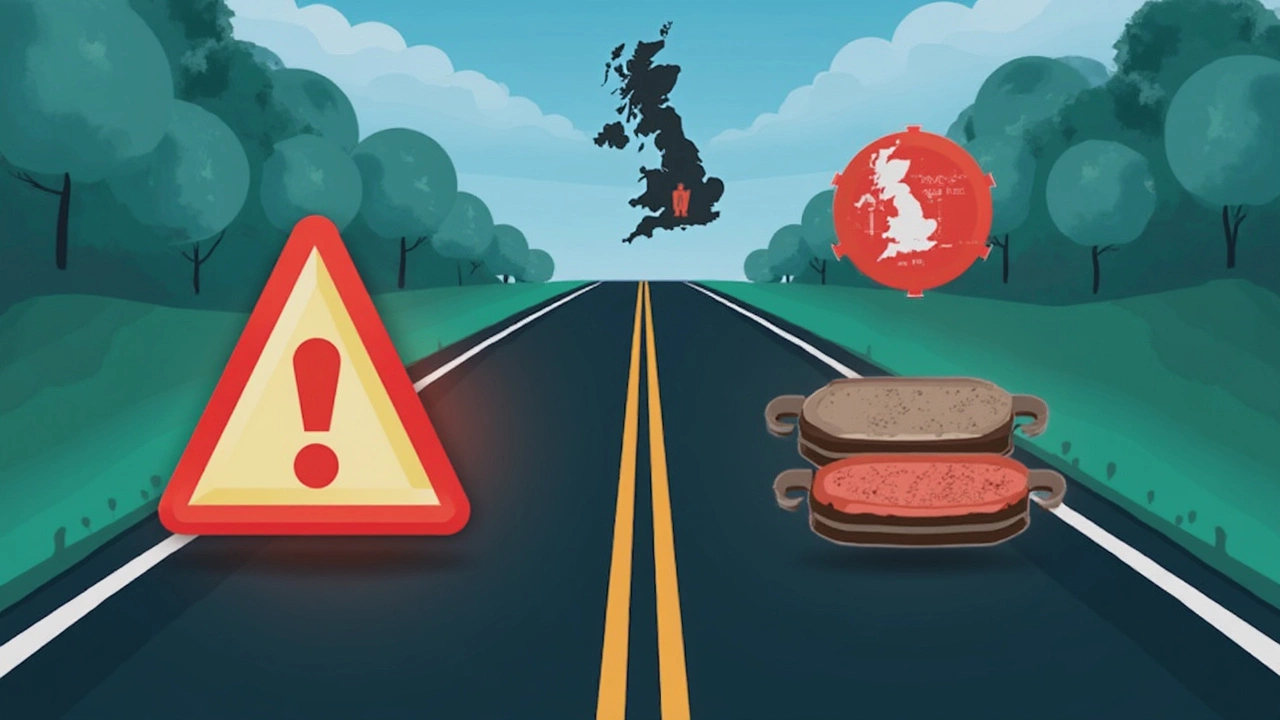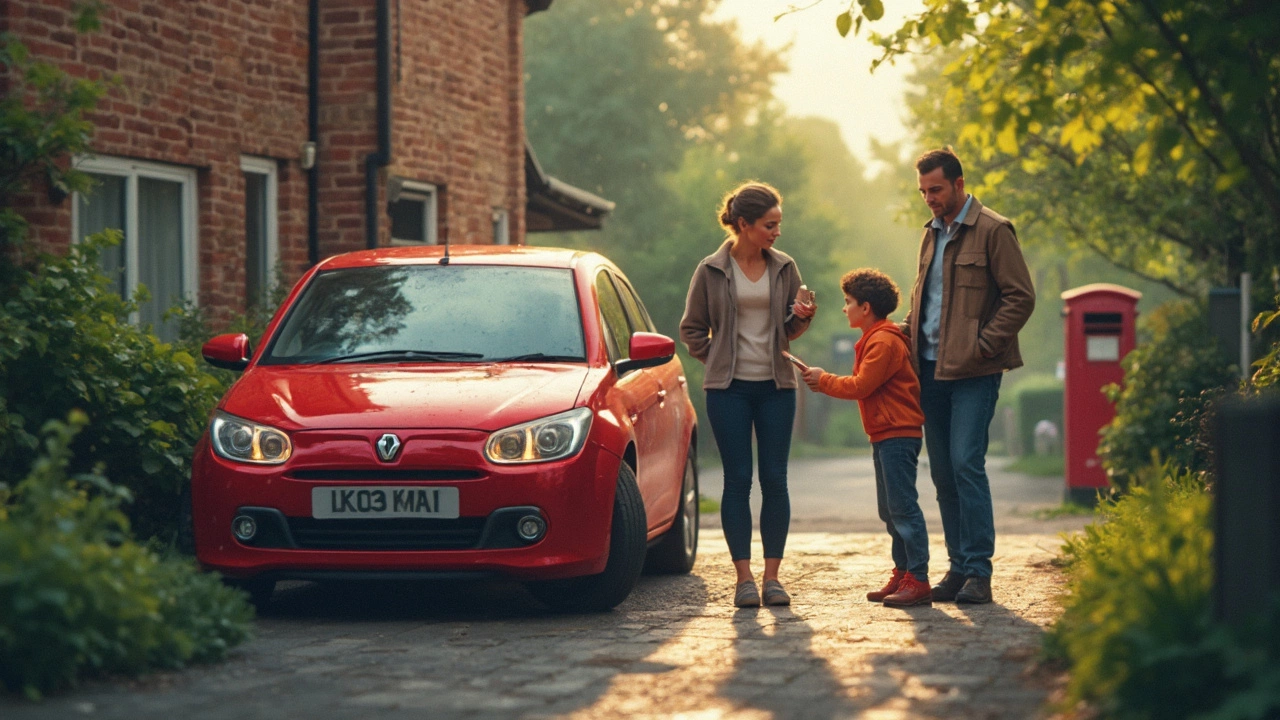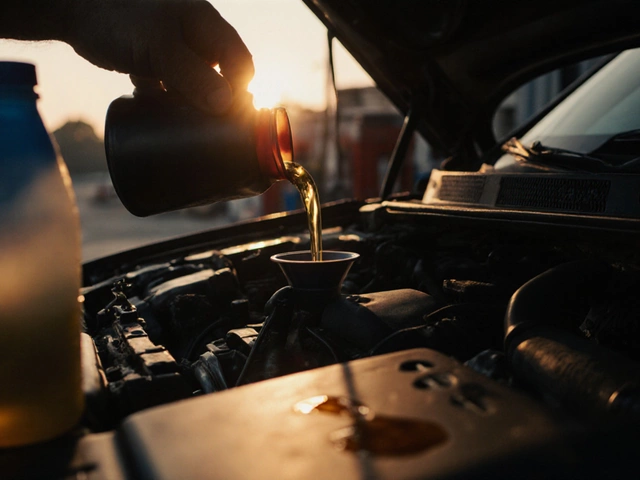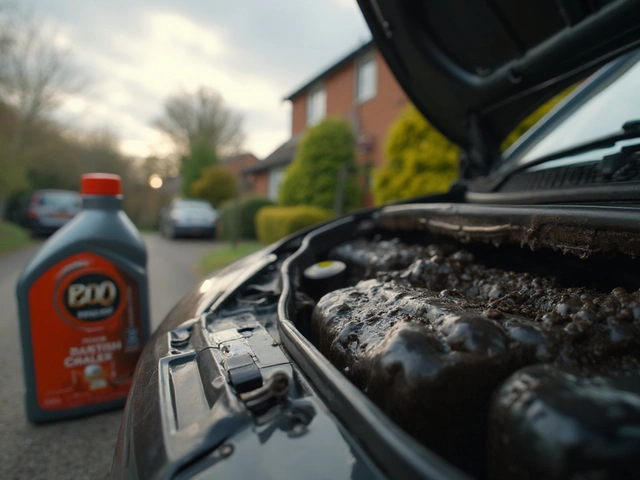Your brakes are basically your car's insurance policy against disaster. Ignore their warning signs, and you’re just tempting fate—nobody wants to find out the hard way their pads are toast right when they need to stop suddenly.
Ever heard a sharp squeak or grind when you tap the brakes? That’s not your car singing; it's likely your brake pads crying for attention. Freaked out by a weird vibration in the pedal or noticing your car takes longer to stop? Those aren’t quirks—they’re red flags.
Mistaking these early signals for something less serious is how a cheap fix turns into a pricey problem. If you know what to look and listen for, you can catch worn pads before they mess with your stopping power or chew up your rotors. Let’s get real: nobody likes paying for surprises at the mechanic, especially when a five-minute check could have saved you big money.
Getting it right isn’t rocket science. You just need a quick guide on what your car’s trying to tell you. We’re about to dive into super easy ways for spotting worn brake pads—and how to handle it before your car gets unsafe, or your wallet takes a hit.
- The Obvious Signals Your Car Gives You
- What Worn Brake Pads Look (and Sound) Like
- Common Myths About Brake Pad Lifespan
- Easy Ways to Check Brake Pads at Home
- When to See a Pro (and How to Save Money)
The Obvious Signals Your Car Gives You
If your brake pads are on their last legs, your car doesn’t keep it a secret. Stop paying attention for too long, and you could miss some pretty loud clues. Here’s what most drivers notice first:
- Squealing or squeaking noises: Many brake pads have built-in wear indicators that screech when the pads are too thin. It's on purpose, so you won’t ignore it.
- Grinding sound: This means your pads are basically gone and now the brakes are metal-on-metal. If you’ve reached this stage, you’re risking serious rotor damage—and a much bigger repair bill.
- Vibration or pulsing in the brake pedal: Warped rotors from neglected pads or uneven wear can make your foot feel like it's getting a foot massage (the bad kind).
- Warning light: Many modern cars have a dashboard brake warning light if the system detects a problem. It could be pad wear or something else, but it’s a solid cue to check things out.
- Taking longer to stop: This is more than a minor hassle. It’s a safety issue. Worn pads just don’t have the grip to slow your car quickly.
You might wonder, how long should pads actually last? It depends a lot on how and where you drive, but on average, you’ll see numbers like this:
| Driving Style | Average Brake Pad Life (miles) |
|---|---|
| Mostly city (stop-and-go) | 25,000–35,000 |
| Mostly highway | 40,000–70,000 |
One more clue smarter cars give you? Some high-end models now show brake pad percentage left on the dashboard. But for the rest of us, you’ll need to trust your ears, feet, and eyes. If you notice anything weird, don’t write it off. Your car is basically raising its hand, asking for help. Listen to it—it might just save you from a close call or a wallet-crushing repair.
What Worn Brake Pads Look (and Sound) Like
If you’re curious whether your pads are going bad, the signs are usually right in front of you—or they’re literally screaming from your wheels. Brake pads lose material every time you stop, so after a while, you’ll start getting clues from both sight and sound.
Let’s start with what you’ll hear. Modern pads actually come with a built-in squealer, which is just a tiny piece of metal that scrapes the rotor when you get low on pad material. If you hear a high-pitched squeak almost every time you brake, that’s your cue. Grinding noises? That’s even worse—by this point, you might be riding pad-less, which means metal-on-metal contact and damage to the rotors.
Now, about looks. If you peek through your wheel spokes and spot the brake pad pressed against the rotor, you want to see at least 3mm (about the thickness of two stacked pennies) of pad left. Less than that, and you’re risking it. Here’s a cheat sheet of what to spot:
- Pad thickness: Less than 3mm is a no-go.
- Deep grooves or scoring on the pad or rotor are big red flags.
- Chipped, cracked, or crumbling pad edges mean swap them out.
- Lots of brake dust on your wheels can be a sign your pads are disappearing faster than normal.
Got a weird feel in the brake pedal—like it’s squishier or pulses when you press? That tells you the pads (or even the rotors) aren’t in top shape.
Still not sure? Check out this quick table that lays out common warning signs and what they usually mean:
| Warning Sign | Likely Cause |
|---|---|
| Loud squeaking | Pad wear indicator hitting the rotor |
| Grinding sound | No pad material left, metal-to-metal contact |
| Thin pads (<3mm) | Needs replacement soon |
| Brake warning light | Pad wear sensor triggered |
| Soft/spongy pedal | Possible worn pads or brake fluid issue |
Most everyday drivers only check their pads when they hear noises, but just looking at the thickness every few months could save you from driving on borrowed time. Trust your ears, your eyes, and that gut feeling when something feels off. Pads aren’t supposed to last forever—typically 30,000 to 70,000 miles depending on how and where you drive, but city traffic and hard braking wear them out quicker. Ignoring the warnings just makes repairs more expensive down the road.

Common Myths About Brake Pad Lifespan
There’s so much mixed info floating around about how long brake pads should last—no wonder people get confused! Some say they’re good for 50,000 miles, others swap them out way sooner. The truth? There’s no magic number. Everything from how you drive to what kind of car you have makes a difference.
Let’s clear up some of the most stubborn myths about brake pad lifespan:
- Brake pads last the same for everyone: Nope. City drivers hit the brakes way more often than those cruising highways, so their pads wear out faster.
- All brake pads are built to last the same distance: Cheaper pads can disappear in half the mileage compared to premium pads.
- You can wait until you "hear squealing": Sometimes you won’t get an early audible warning. Some pads just wear down in silence until you’re scraping metal on metal—bad news for your rotors and wallet.
- Regular driving means you’re safe for years: Things like towing or carrying heavy loads heat up and wear out pads much faster.
Ever seen two neighbors with the same car have wildly different pad wear? That’s all about driving habits and road conditions. Here’s a quick look at real-world brake pad lifespan ranges for different situations:
| Driving Environment | Typical Brake Pad Lifespan (miles) |
|---|---|
| Highway | 50,000 - 70,000 |
| City / Stop-and-Go | 20,000 - 30,000 |
| Mixed Driving | 30,000 - 50,000 |
| Heavy Duty / Towing | 15,000 - 25,000 |
A lot of drivers trust the "rule of thumb" that you can always inspect pads during oil changes, but that won’t help much if you rack up high miles between visits.
According to AAA: "Realistically, brake pad wear varies so widely that mileage intervals aren’t the most reliable way to check—they should always be inspected whenever tires are rotated or every 10,000 miles."
The real lesson here? Don’t gamble on a universal number. Pay attention to the signals, check your brake pads now and then, and don’t trust all those garage tales about guaranteed lifespans.
Easy Ways to Check Brake Pads at Home
Checking your brake pads isn’t just for the pros—anyone can do a quick check with a few basic steps. You don’t need fancy gear or a lift. Most cars let you peek at the pads through the wheel spokes or after popping off the wheel.
Here’s what most people do to check their brake pads at home without too much hassle:
- Look through the wheel spokes. You’ll see a metal rotor and a pad pressed against it. Most new pads are about 10-12 mm thick. If it looks less than 3mm—about the thickness of two stacked credit cards—it's time to swap them out.
- Listen for odd noises. If you hear squeaking, that’s often a built-in wear indicator scraping the rotor. Grinding means the pad’s worn totally through, and you’re now damaging your rotors.
- Watch for brake dust. Less dust on your front wheels than before could actually mean the pads are worn down to nothing but the metal plate.
- Remove the wheel. If you want to be 100% sure, jack up the car on a flat surface, remove the wheel, and look at the pad itself. Compare both outer and inner pads—sometimes, only one side wears down.
These warning signs and checks help catch the problem early so you don’t accidentally wreck your rotors or end up losing braking power at the worst moment.
Here’s a quick table, so you know what kind of pad thickness means what:
| Pad Thickness | Condition | What To Do |
|---|---|---|
| 10-12 mm | New/Like New | Good to go |
| 6-8 mm | Healthy | Keep an eye on them |
| 3-4 mm | Worn | Plan to replace soon |
| Less than 3 mm | Critical | Replace right away |
One more tip—if your car has brake pad sensors, watch out for a dashboard light. But don’t trust just the electronics; use your eyes too. Pads can wear unevenly or sensors may fail. Sticking to quick visual checks every few months, especially if you drive in heavy traffic or tow stuff, can save you later headaches (and some serious cash).

When to See a Pro (and How to Save Money)
So when do you actually need a professional mechanic instead of just YouTube tutorials? If your brake pads are worn thin—think less than 3mm—or you hear grinding, it’s time to stop guessing and get help. Grinding usually means the pad is toast and it’s eating into your rotor. Keep driving like that and you’re looking at a way bigger bill than just new pads.
If you spot uneven wear on your pads, or the brake pedal feels squishy or sinks to the floor, don’t risk it. Sometimes, other parts like calipers or brake lines could be failing too, and that’s not a job for just basic tools. Cars with ABS, electric parking brakes, or sensors in the pads definitely need someone who knows what they’re doing. Modern brake systems can get tricky fast.
Now, about saving money—there are tricks that work. Always ask for a written quote before the work starts and check it includes both parts and labor. If your mechanic says you need new rotors, ask if they can be resurfaced instead (sometimes they still can if they aren’t too thin or scored up, and the difference can be $100+ per axle). Consider buying quality pads yourself from a trusted parts store online, then just pay a shop for the install—this can save a surprising chunk, and you get to pick the brand and price you want. Just check the shop is cool with that first.
- Look for service specials or coupons—most national chains run regular deals for brake pad replacement.
- Don’t be shy about asking questions so you don’t get sold stuff you don’t need, like extra ‘brake cleaning’ or fancy ceramic rotors if you just drive in town.
- If your car still has a brake pad warranty (some new cars have coverage to a certain mileage), check before you open your wallet—repairs might be free.
BOTTOM LINE: If in doubt, get the brake pads checked by a pro. Spotting a little wear early means you fix it fast—and you don’t end up footing the bill for bigger repairs down the road.


